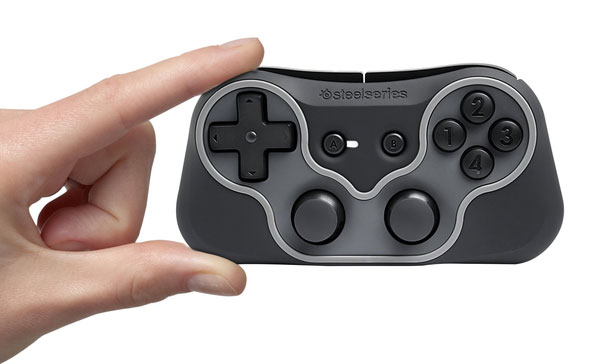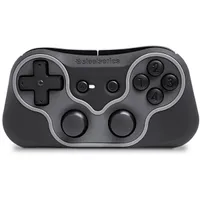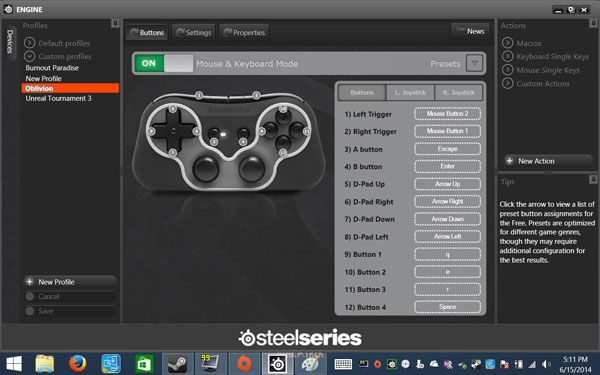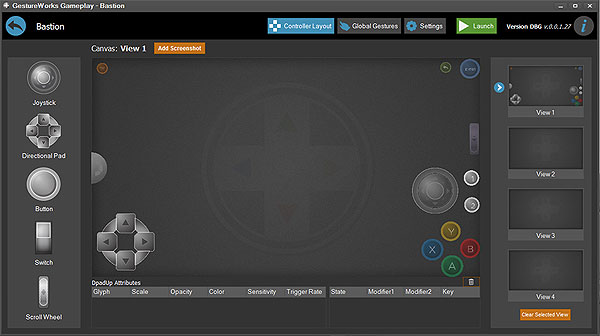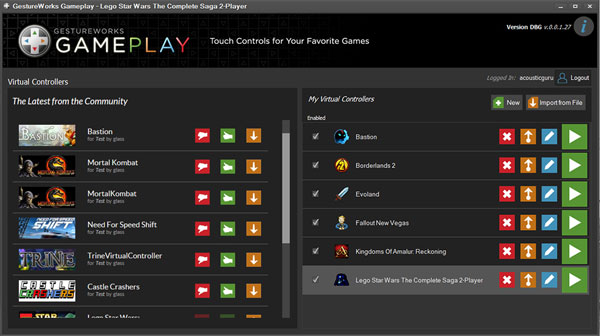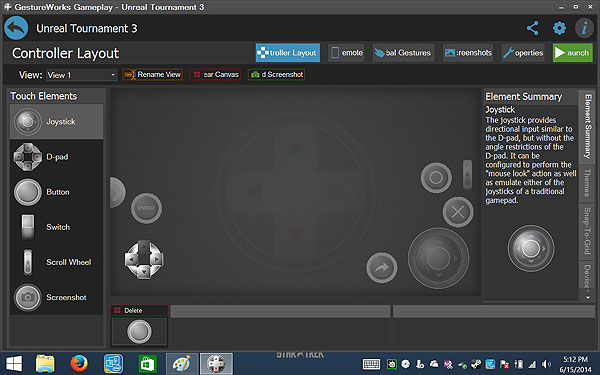Is Your Windows 8 Tablet Fast Enough For PC Gaming?
Why should Nintendo's 3DS XL, Sony's PlayStation Vita, and Nvidia's Shield have all the fun? We take Dell's Windows 8.1-based Venue 8 Pro, powered by an Atom processor, and try turning it into a portable PC gaming console with a handful of upgrades.
Game Control: SteelSeries Free and GestureWorks Gameplay
The SteelSeries Free Bluetooth Gamepad
As I was researching for this story, I discovered that there just aren't many Bluetooth-capable game controllers for the PC. Thankfully, SteelSeries has a well-designed option: its Free.
The gamepad is small, yet surprisingly comfortable. It doesn't feel restrictive or limiting in any way. There are eight buttons, two analog sticks, and an eight-way directional pad. The Free shares the same form factor as SteelSeries' Stratus controller, designed exclusively for iOS-based devices.
In addition to extending PC compatibility, the Free works with iOS- and Android-based devices, too. It gives you the option to remap key functionality on all three platforms. However, I found the PC version's profile editor (called the SteelSeries Engine) perfectly-suited to what I needed, even though the interface took me a little while to get accustomed to. I'd also like to see the company facilitate a way for users to share their custom game profiles. The software can't do that right now.
You can map custom keys to each button, or run the controller in mouse and keyboard mode. This allows the analog stick to emulate mouse movement, which is perfect for first-person shooters. Moreover, the controller can simply be used as a Windows gamepad in titles that support it.
With an advertised 10+ hours of battery life, I was able to complete my testing without recharging the gamepad once. Of course, the Free is still operable while it charges, so you're never left hanging if it runs out of juice as you're playing.
Really, my only criticism of the Free is its $50 price tag on Amazon. Given a lack of competition out there, though, SteelSeries likely isn't under any pressure to make the controller more affordable. On the bright side, wide platform support means you can use the same piece of hardware under several different operating environments.
GestureWorks Gameplay
While the Free is certainly nice, it'd be even more ideal, in my opinion, to have controls built into the gaming device itself. Nintendo, Sony, and Nvidia give you the ability to hold their consoles in your hands. The Wikipad Gamevice promises to deliver this kind of functionality, but we still haven't heard much since its announcement. What is today's tablet gamer to do?
Get Tom's Hardware's best news and in-depth reviews, straight to your inbox.
Enter GestureWorks. The company's Gameplay software creates a controller that overlays on top of Windows-based games not already optimized for touch support.
The utility is highly configurable. Simply place the joystick, directional pad, button, switch, or scroll wheel on the screen, wherever you want, and assign the corresponding control. Multi-touch gestures and accelerometers are even supported. I wouldn't call functionality particularly intuitive, and the configuration software runs slowly on Dell's Venue 8 Pro.
When Gameplay works, it's wonderful. Unfortunately, the overlay has some practical limitations that get in the way. For instance, it can be a bit finicky when Steam or Origin is involved. In some cases, it simply doesn't work (Need for Speed World is an example). I also encountered occasional glitches. But overall, the software seems to do what it advertises, and the developers at Ideum do pay attention to the issues that users report.
Best of all is the low $15 buy-in for Gestureworks Gameplay. That's a relatively insignificant expense for software enabling desktop-oriented gaming without the encumbrance of physical keyboards, mice, and gamepads. Version 2.0 is on the horizon as well, and from what we hear, upcoming improvements include the ability to use smartphones as game controllers. If you're seriously into tablet gaming and willing to spend some time configuring this application, it'd be hard to go wrong for the price.
Current page: Game Control: SteelSeries Free and GestureWorks Gameplay
Prev Page More Storage: SanDisk Ultra 128 GB MicroSDXC Memory Card Next Page How We Tested Tablet-Based GamingDon Woligroski was a former senior hardware editor for Tom's Hardware. He has covered a wide range of PC hardware topics, including CPUs, GPUs, system building, and emerging technologies.
-
batman2142 Same article with SP3 would be a worthy read since it gives a chance to see how their HD4400 vs HD5000 on the variants match up, and if possible a projection on what the newer chipset that wont be making into the current SP3 but might make into the refresh by holiday season?Reply -
AMD Radeon Great Review :)Reply
Finally i see one noticeable advantage of Windows Tablet over Android -
K-beam Awesome article, Don, I have had the same thoughts recently. I think we would have appreciated some more info especially on:Reply
- Battery (maybe most important when you speak of portablility) - how long does it last with this model. I was eyeing the Asus Transformer Book T100TA, which they say has a quite respectable battery (but is also more expensive)
- Does a PS3 controller (free, if you have a PS3) work with it?
I would ideally have liked to see a mention of the Prince of Persia / Max Payne (1+2) / (Older) Tomb Raider / Splinter cell (1-4) and similar older third-person adventure games. In my opinion those work marvellously with a PS3 gamepad. Ah, I forgot - I wonder whether the touch would work directly with games from the Monkey Island series. Ah, another great genre for playing on a tablet, that was totally missed here - turn-based strategy games like the Heroes of Might and Magic series and Civilization (4). And also the grand-daddy of "modern" open-world FPSs - FarCry 1 :)
The biggest risk with those games is still compatibility with touch/Win 8.
An expanded re-visit maybe when the new generation of chips come out from either from Intel or AMD? -
CaptainTom I mean isn't the controller choice obvious: PS4. It connects via bluetooth and has a touchpad so you can control the menus with a mouse.Reply -
back_by_demand If you bought a Surface Pro 3 it probably wasn't to play games, but nice to know it is one of the best performers out there in the tablet rangeReply -
ScrewySqrl What I want to know is why has no one pushed an AMD APU into one of these windows tablets for gaming?Reply -
K-beam What's up with these multiple posts!!! Sorry for the splamming, it seems every time the page gets refreshed, the post is re-submitted!Reply
